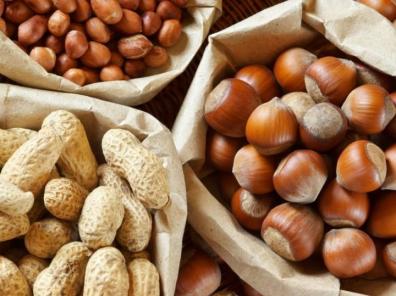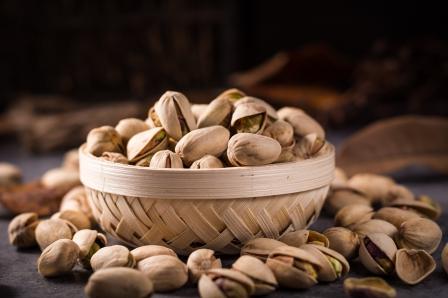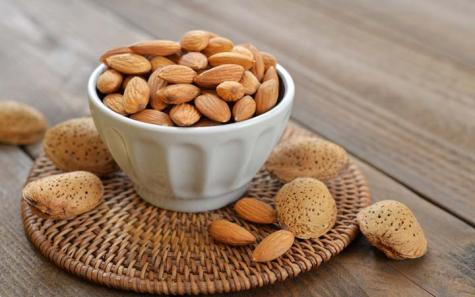Peanuts, often mistakenly labeled as nuts, are legumes that belong to the pea family. Despite their name, peanuts offer an array of health benefits and are a versatile ingredient in various cuisines worldwide. In this comprehensive guide, we will explore the nutritional benefits of peanuts, their uses in both culinary and health contexts, and provide you with delicious peanut-based recipes to incorporate into your diet. Nutritional Profile of Peanuts: Peanuts are a powerhouse of nutrition, packed with essential vitamins, minerals, and antioxidants.
.
Here is a breakdown of the key nutrients found in peanuts: 1. Protein: Peanuts are an excellent plant-based source of protein, with around 26 grams of protein per 100 grams serving. This makes them a great option for vegetarians and vegans looking to meet their protein requirements. 2. Healthy Fats: Peanuts are rich in monounsaturated and polyunsaturated fats, including omega-3 and omega-6 fatty acids, which are beneficial for heart health. However, it is important to consume them in moderation, as they are calorie-dense. 3. Fiber: Peanuts are a good source of dietary fiber, with around 8 grams per 100 grams serving. Fiber is essential for digestion, gut health, and maintaining a healthy weight. 4. Vitamins and Minerals: Peanuts contain a variety of vitamins and minerals, including vitamin E, B vitamins, magnesium, phosphorus, and zinc. These nutrients support various bodily functions and contribute to overall well-being.
..
Health Benefits of Peanuts: In addition to their impressive nutritional profile, peanuts offer a range of health benefits when consumed as part of a balanced diet: 1. Heart Health: The monounsaturated and polyunsaturated fats in peanuts can help lower bad cholesterol levels (LDL) and reduce the risk of heart disease. The presence of antioxidants such as resveratrol further supports heart health by reducing inflammation and improving blood flow. 2. Weight Management: Despite being calorie-dense, studies have shown that incorporating peanuts into a weight loss diet can actually aid in weight management. The combination of protein, fiber, and healthy fats in peanuts helps promote satiety and prevent overeating. 3. Blood Sugar Control: Peanuts have a low glycemic index, which means they have a minimal impact on blood sugar levels. This makes them a suitable snack option for individuals with diabetes or those looking to manage their blood sugar levels. 4. Brain Health: The presence of nutrients like vitamin E, folate, and niacin in peanuts supports cognitive function and may help reduce the risk of cognitive decline with age. Omega-3 fatty acids also play a role in maintaining brain health and protecting against neurodegenerative diseases. Uses of Peanuts: Peanuts can be enjoyed in a variety of ways, both in culinary dishes and as part of a healthy diet: 1. Peanut Butter: Perhaps the most popular way to enjoy peanuts is in the form of peanut butter. Spread it on toast, add it to smoothies, or use it as a dip for fruits and vegetables. Look for natural peanut butter options with minimal added sugars and preservatives. 2. Snack on Roasted Peanuts: Roasted peanuts make for a delicious and convenient snack. Enjoy them on their own or mix them with dried fruits and seeds for a satisfying trail mix.
…
3. Peanut Sauce: Peanut sauce is a staple in many Asian cuisines and can be used as a dip, dressing, or marinade for meats and vegetables. Combine peanut butter with soy sauce, garlic, ginger, and a touch of sweetness for a flavorful sauce. 4. Peanut Crusted Chicken: Crushed peanuts can be used as a crunchy coating for chicken or tofu. Simply coat the protein in crushed peanuts before baking or frying for a flavorful and textured dish. 5. Peanut Noodles: Toss cooked noodles with a creamy peanut sauce, vegetables, and protein of your choice for a quick and tasty meal. Garnish with chopped peanuts and fresh herbs for added flavor. Peanut Recipes: 1. Healthy Peanut Butter Oat Bars: – Ingredients: Rolled oats, natural peanut butter, honey, nuts, and dried fruits. – Instructions: Mix the ingredients, press into a pan, and bake until golden brown. Cut into bars and enjoy as a snack or breakfast on the go. 2. Spicy Thai Peanut Chicken: – Ingredients: Chicken breast, bell peppers, broccoli, peanut butter, soy sauce, sriracha, and lime juice. – Instructions: Sauté the chicken and vegetables, then add the peanut butter sauce and simmer until the chicken is cooked through. Serve over rice or noodles. 3. Peanut and Banana Smoothie: – Ingredients: Bananas, natural peanut butter, Greek yogurt, milk, and honey. – Instructions: Blend all the ingredients until smooth. Adjust the sweetness to your liking and enjoy a protein-packed smoothie for breakfast or a post-workout snack.




Your comment submitted.